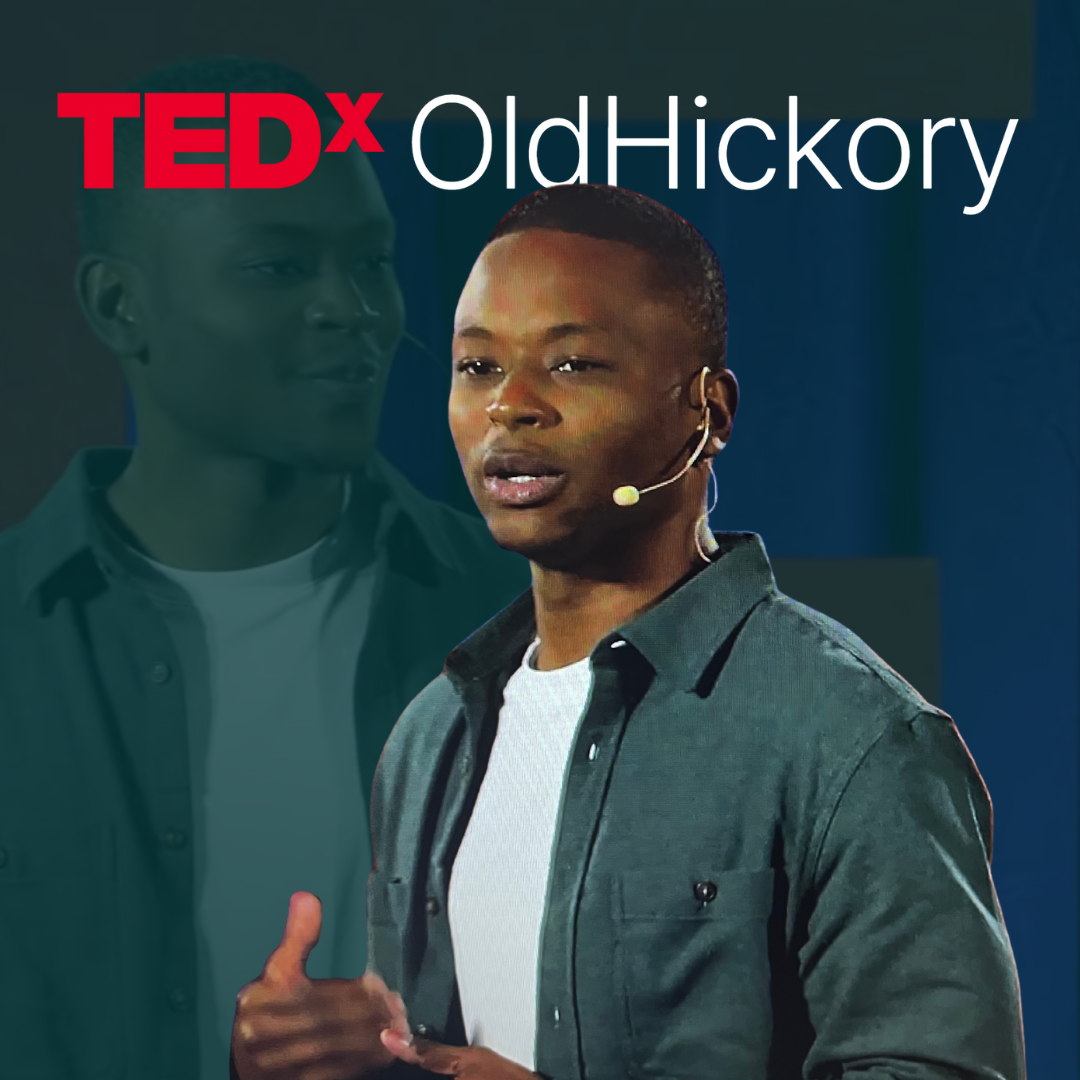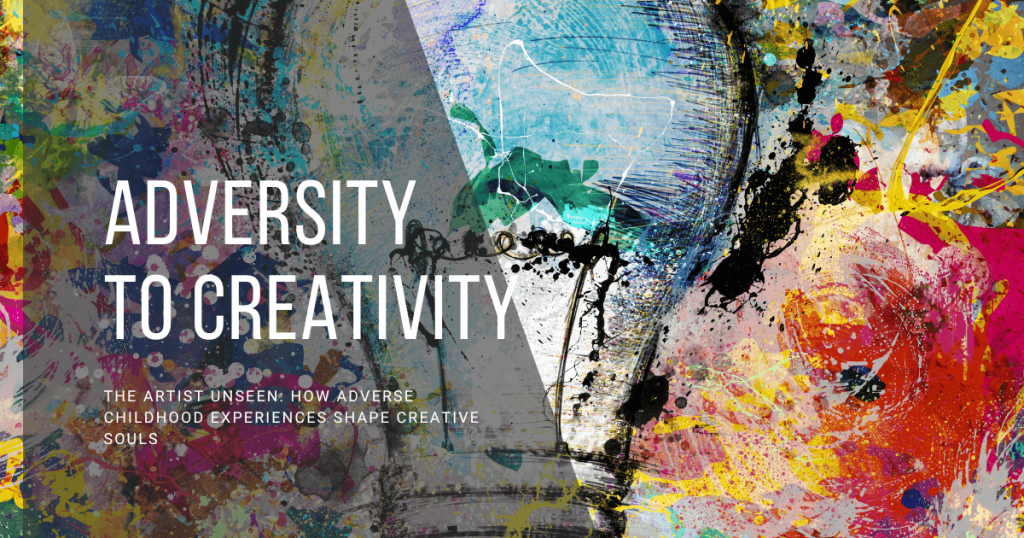rThink of life as a huge canvas, with childhood laying down the first layers of paint where all our complex stories begin to take shape. But what if this canvas is stained with adversity?
It’s a bittersweet truth that sometimes, from the darkest soil springs the most beautiful flowers.
Similarly, childhood trauma and adversity—though deeply unfortunate—can be the unlikely boosters for astonishing bursts of creativity. These challenging experiences, while undeniably painful, can push both children and adults towards creative expressions as a form of coping, healing, and even rebirth.
This blog is not to romanticize pain but to recognize how tough and resilient we can be, and how being creative can open up surprising ways to heal.
Through painting, writing, music, and more, individuals find a voice that might have remained silent, crafting beauty from their struggles and weaving their adverse childhood experiences into something that resonates deeply with others.
Read futher to see how the shadows of trauma can lead to the light of artistic expression—a topic less discussed, but incredibly powerful.
Understanding Adverse Childhood Experiences (ACEs)
Adverse Childhood Experiences, or ACEs, refer to traumatic events occurring before the age of 18 that have a profound impact on a child’s developing brain and body, influencing how they perceive the world and react to stress.
These experiences fall into three broad categories: Abuse, Neglect, and Household Dysfunction. By understanding what constitutes an ACE, we can begin to understand their impact on an individual’s life and creative process.
Here’s a closer look at these categories:
1. Abuse
-
- Physical Abuse: Hitting, beating, or inflicting other physical harm.
- Emotional Abuse: Insults, threats, humiliation, or other verbal assaults.
- Sexual Abuse: Any form of sexual contact or behavior with a child.
2. Neglect
-
- Physical Neglect: Failing to provide basic needs like food, shelter, or safety.
- Emotional Neglect: Lack of emotional support, love, or affection.
3. Household Dysfunction
-
- Mental Illness: Living with a family member who has significant mental health issues.
- Substance Abuse: Exposure to household members who abuse alcohol or drugs.
- Incarceration: Having a family member who is in jail or prison.
- Domestic Violence: Witnessing or being aware of violence in the home.
- Divorce or Separation: Undergoing the separation or divorce of parents.
Research unequivocally ties ACEs to lifelong risks of behavior-related, physiological, and mental health issues, and yet, what about their implications for the human imagination?
The Dual Impact of ACEs on Creative Abilities
While the shadow of Adverse Childhood Experiences often looms large over the landscape of an individual’s mental and emotional health, their impact on creativity can be both profound and paradoxical.
Traumatic experiences can block creativity by causing mental health issues and emotional problems. This takes up a lot of mental energy and focus, making it difficult for some people to use their creativity.
On the other hand, tough times can actually help people grow stronger, more understanding, and emotionally insightful, which can really boost creativity. People who have been through a lot sometimes see the world in a special way, shaped by what they’ve experienced.
This way of seeing things can inspire people and spark new ideas. It helps them share complicated feelings, tell interesting stories, and really connect with others in a human way.
So, even though bad experiences in early life can hurt creativity and need support to overcome, there’s also a chance they can help creativity grow. This shows how closely linked challenges and creativity are.
The Canvas of Childhood and its Far-Reaching Strokes
Research and stories tell us that early trauma doesn’t just hurt; it can actually leave a mark on someone’s ability to be creative. A lot of famous artists and innovators from history had their own struggles and scars from their early years.
Their art usually tells a story of their struggles and how they’ve survived, even if they don’t say it outright. Childhood trauma becomes a part of who we are, shaping how we express ourselves artistically and our drive to create something new.
Think about Maya Angelou – her poems and memoirs really put a face to the silent pain of sexual abuse she went through when she was young. Then there’s Elon Musk, a big name in innovation, whose rocky relationship with his dad paints a personal story amidst the huge achievements of SpaceX and Tesla.
These creative powerhouses show us that pain, when channeled right, can turn into the ink that pens some of the most touching stories about what it’s like to be human.
The Therapeutic Brushstroke of Art and Creativity
For many people, doing art becomes more than just a fun activity; it’s a safe space. It’s like being both an artist and a magician, turning pain into something beautiful. Art gives us a way to express feelings without words, helping us share emotions that are often too hard to convey.
Art can be a powerful tool for healing for adults who have experienced adverse childhood experiences (ACEs) in several ways:
Expression of Emotions:
Art lets people express deep feelings without words. By painting, drawing, or doing other art, people can show their feelings and experiences. This helps them feel better and let out emotions.
Self-Exploration and Reflection:
Making art helps people explore and understand themselves better. When people create images of what they think, remember, and experience, they learn more about their feelings and actions. This helps them understand their emotions and why they do certain things more deeply.
Empowerment and Agency:
Art gives people the power to take control of their lives. When making art, people choose colors, shapes, and forms. This lets them tell their own stories and share their views in their own way.
Mindfulness and Relaxation:
Making art can help you relax and feel more peaceful. It’s a great way to take a break from stress and worry. When you focus on creating something, it helps you stay in the moment and feel calmer inside.
Transformation and Resilience:
Art can turn pain and adversity into something special and beautiful. By creating art, people can see their experiences in a new way, discovering stories that help them heal and become stronger.
Connection and Support:
Joining art therapy or art groups can help you make friends and feel supported. Sharing your art with others who understand what you’ve been through can make you feel accepted and less alone, helping to reduce feelings of loneliness and embarrassment.
Integration and Healing:
Art can help people feel more whole and heal emotionally. By being creative, individuals can deal with tough emotions and past events, helping them feel better and more complete.
Finding Freedom Through Creativity
Painting and Drawing:
Painting and drawing, key aspects of the visual arts, offer a unique way for individuals, particularly children, to express emotions and thoughts without words.
These activities foster creativity, emotional growth, and self-awareness by enabling personal expression through color, shape, and texture.
Engaging in visual arts provides a special communicative avenue and a deeply personal experience, promoting a sense of freedom in expression.
Imagination and Stories:
The power of storytelling, whether through reading aloud or acting them out in play, allows individuals to alter the course of narratives.
This special chance to change endings empowers people to remake stories the way they want. It basically gives them a way to finish a story in a way that fits what they wish for or the lessons they want to share.
It’s a magical process that not only enhances creativity but also deepens our connection to the stories that touch our lives.
Music:
Music is a powerful healing tool, particularly for emotional trauma.
For instance, after a massive tornado in the Southeastern U.S., music therapy aided 8–11-year-old survivors in processing their emotions. By expressing their feelings through music, these children could navigate their emotional turmoil positively, showcasing music’s ability to facilitate emotional healing and resilience.
Music offers a unique recovery avenue, allowing individuals to express unspeakable feelings and heal emotionally.
Journaling and Blogging:
Writing is incredibly freeing. It helps you understand things better and feel more sure of yourself. It’s a personal journey that sometimes extends beyond the individual, reaching others who find comfort and connection in the writer’s story. This process helps people learn about themselves and brings readers together, especially those who have similar experiences or feelings.
Challenges Under the Spotlight
But the artistic path for those with ACEs is littered with hurdles. True talent comes with a unique voice — and it’s a voice that may have been muted during their most impressionable years. The fear and self-doubt sown in traumatic soil can become invasive weeds, choking the creative spirit before it can bloom.
The courage to be vulnerable, which art requires, is often scary for people who were hurt the most when they were young.
For a lot of people, creating isn’t just about making something pretty. It’s also a way to find a sense of who they are and a feeling of safety.
Sometimes, tough experiences from childhood can make adults work hard to feel noticed and appreciated. This is where the power and healing of being creative comes in. To really show who you are in your art, you first have to be brave enough to look deeply into your own life stories.
Nurturing Talent and Healing Through Art
If you’re a parent, educator, or advocate looking to use art as a means to assist someone with Adverse Childhood Experiences, the first step is providing a trusting and supportive environment.
Encourage people to freely express themselves in any art form they like, such as painting, writing, music, or dance. Instead of critiquing or directing their work, just appreciate it. Create a safe space for their voices to be heard and valued.
Listening is key. Often, the stories behind a piece of art are just as important as the artwork itself. When you really care about someone’s creative work and their experiences, it makes them feel understood and valued.
Also, getting them involved in community art projects can really boost their confidence. It helps them meet others with similar experiences and shows them how their own stories can make a difference in the world.
Remember, the goal isn’t to fix everything but to help people understand and start to heal. Art can be a powerful help with this, making people feel stronger, more confident, and like they belong.
Conclusion:
It’s about seeing the hidden struggles creative people with tough childhoods face every time they start to create, whether it’s through writing, painting, or making music.
It turns the conversation about childhood trauma into a deep look at how people can not only get through tough times but also find beauty in the toughest parts of life. The connection between difficult childhoods and creativity is a story that hasn’t been fully shared yet.
Sharing it could help free the unseen artists among us. By recognizing their battles, we celebrate the power and depth of creativity – it’s real, strong, and deeply moving.







